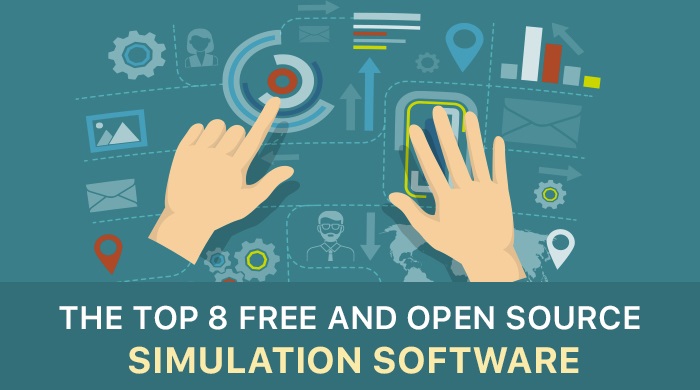Decision-making is a very critical aspect of any business. Any minor mistake and a wrong decision can cost businesses, whereas a good decision can greatly improve the profitability and performance of the firms. Evaluating and iterating the options before making any decision for any business process stands critical. This evaluation is carried out through careful analysis of different scenarios and their impact on business.
Replicating a real-world situation will create a chance to assess the feasibility and effectiveness of various ideas. This can greatly reduce failure rates, reduce costs, and save time. This type of practice (simulation) has been followed by the defense to check the military weaponry, by the automakers while designing the prototypes, and in recent times, the same is finding a strong place in other industries too.
Through simulation and modeling, organizations can quickly make their decisions based on the simulation results to easily navigate through challenges. Businesses can primarily use simulation software to simulate potential decisions and actions. It allows businesses to test new products and optimize their manufacturing processes without affecting the ongoing processes.
What is Simulation?
Simulation is the virtual representation or imitation of a certain real-world process or situation. Simulation allows businesses to determine how the entire system will evolve over time when certain variables are changed. It uses some models to imitate the operations of an existing or proposed system. Using simulation, users can test different scenarios for better decision-making. Simulation is often coupled with virtual reality technologies to ensure an immersive user experience.
Why Use Simulation?
Simulation is used by businesses and individuals to test their ideas against millions of variables for the identification of potential issues, risks, and opportunities. Testing a theory or process change in the real world can be a resource and time-consuming process due to which simulation is used by businesses. Through this, businesses can explore ‘what if’ questions without experimenting on the whole system so that appropriate changes can be made to the systems and processes on time. In addition, simulation software is a powerful tool for validating assumptions, making better decisions, and visualizing how ideas will work in the real world.
Simulation is a powerful technique for businesses to understand the performance and effectiveness of existing and planned systems while also allowing them to compare alternative solutions. Moreover, simulation is also crucial for businesses in analyzing how different procedures, process changes, and capital investments can impact the performance and functioning of a business.
The Power of Simulation Software
Simulation software is a boon to business firms in various aspects. Such software not only helps businesses in identifying the bottlenecks in information and product flows but also helps in acquiring necessary insights about which variables are critical for optimal system performance. Simulation software can assist in simulating and studying abnormal incidents in different systems to handle them before happening.
A good simulation software could easily enhance the effectiveness of data visualization software, statistical analysis software, virtual tour software, augmented reality software, strategic planning software, etc.
Simulation software is also useful in predicting the behavior of any system. Whether it is the evaluation of a new design or diagnosing problems of an existing system, simulation software is beneficial in testing a system under certain conditions which are hard to reproduce in real life.
Methods of Simulation
In the simulation, various models and methods are used by businesses based on their needs and requirements. Some of these methods are as follows:

Stochastic
In this method, the variables change randomly or stochastically to simulate unlimited possibilities. Through this, businesses can understand the probability of different results. The operator records the output each time and inserts new random values to obtain another result. This is generally used in cases when businesses cannot accurately estimate the needed variable due to fluctuations in data range or not having enough data.
Deterministic
This simulation method doesn’t experiment with random variables like the stochastic method. Instead, this method mainly uses mathematical equations such as difference equations to obtain the results. This method produces unique sets of output instead of generating random sets of output when a set of inputs is given. It is mainly used in processes where the behavior can be predicted from start to end.
Probabilistic
It is a popular simulation method that uses estimated probability distribution modeling to predict the results. Through this method, businesses can easily understand the impact caused by data uncertainties on their operations and processes. It is widely popular in industrial use for generating and estimating new samples from models.
Monte Carlo Simulation
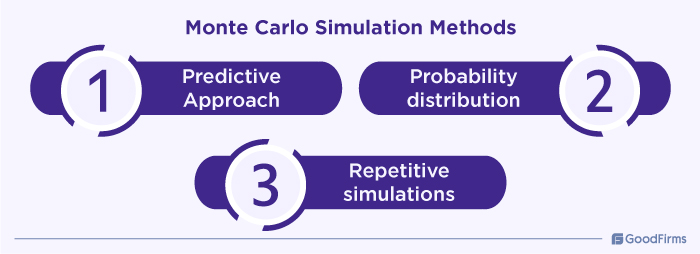
This method usually utilizes mathematical models, which is also known as risk analysis simulation. This method mainly uses a predictive approach, probability distribution, and repetitive simulations for simulating the situations. It uses the empirical data of the input and output of the system to identify uncertainties and risks in it. This simulation method is mainly used to properly understand potential threats before initiating or modifying any critical project.
Different Types of Simulation Software

Discrete Event Simulation
In this simulation software type, users can observe specific events of the business processes. This is one of the most common simulation software types used by businesses to study different systems for different outcomes. It is mostly used to help employees thoroughly understand business processes. This software type is more reliable to use for factory operations and traffic analysis. Arena is the most commonly used discrete event simulation software.

Dynamic Simulation
This type of simulation software helps businesses in modeling the time-varying behavior of any dynamic system either discretely or continuously. It is commonly used to model complex systems and predict their behavior under different conditions. It is majorly used in machine kinematics, human ergonomics, aerodynamic testing, and virtual prototyping. MATLAB is a popular dynamic simulation software.
Process Simulation
This software type is very popular among businesses owing to its benefits. Process simulation software can simulate the behavior of different processes in various industries. This type of software is beneficial for business firms in analyzing, designing, optimizing, and troubleshooting different internal and external processes. It is widely used to model physical interactions between different systems, such as in-service product modeling, in-manufacture product modeling, weather forecasting, etc.
Agent-based simulation
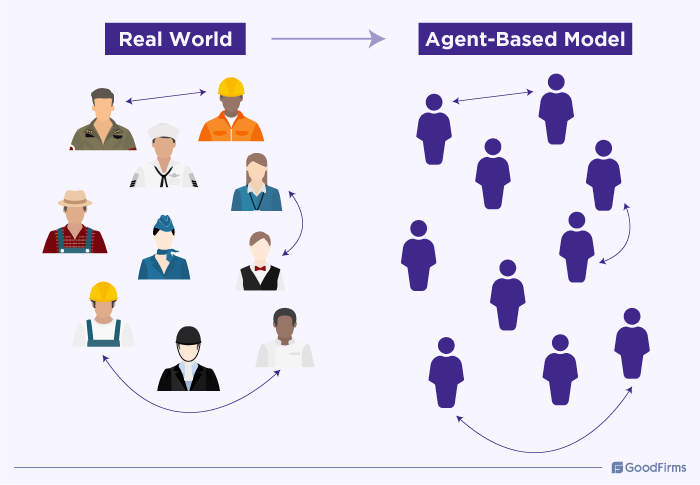
In this type, simulation software works on agent-based simulation, i.e., understanding the influence of an agent on the whole environment or system. The agent can be anyone or anything, such as equipment, people, processes, etc. In this simulation, users can determine how the system and agents are responding to each other to derive the predictions. By using such software, businesses can examine how a proposed change will affect the whole system. Potential risks and opportunities can also be identified through such type of simulation software. One popular agent-based simulation software is AnyLogic which is deployed by a number of companies.
Continuous
This software is used to simulate or model continuous systems that change over time. The variables change continuously based on a set of differential equations. This simulation software type is widely used by power plants, chemical processes, and transportation systems. Simul8 is a commonly used continuous simulation software that is widely used by leading businesses.
Hybrid
This type of simulation software uses two or more simulation types for accurate simulation of a complex process or system. Through the combination of different simulation techniques, hybrid software can observe the interactions and feedback between different components of a system in a better manner. Through this, more accurate insights can be acquired regarding the behavior and performance of the system in different conditions. Simio is a popular hybrid simulation software used in a variety of industries.
Concept simulation
This type of software is used by businesses to create and simulate certain business concepts of systems and processes. Through concept simulation software, users can create visual representations of their ideas and concepts to determine weak areas or potential issues. Through such software, businesses can easily experiment with their ideas and concepts without physically building anything. This is useful in saving time and resources which can be used elsewhere. One of the widely used concept simulation software is Vensim which is used to improve the performance of real systems.
Industry Applications of Simulation Software
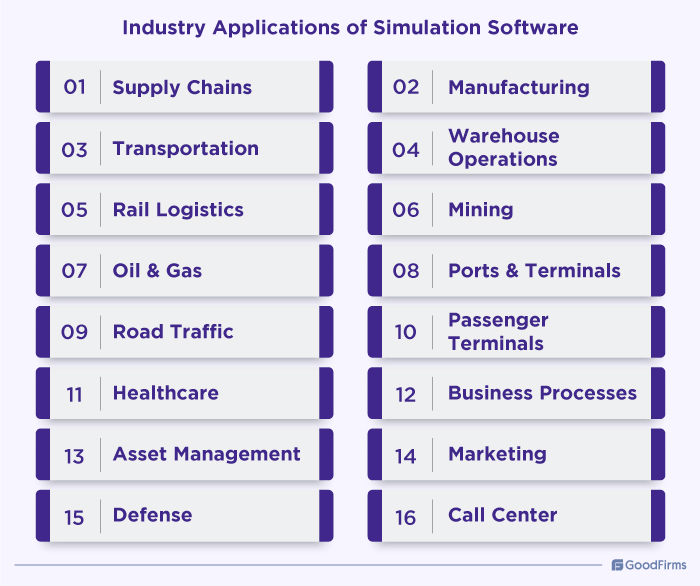
Simulation software is rapidly being deployed in the business processes of almost all major industries. Whether it is supply chain and manufacturing or marketing and asset management, simulation software can simulate various aspects of business operations. Some of the popular applications of simulation software are discussed in this section.
Supply Chains
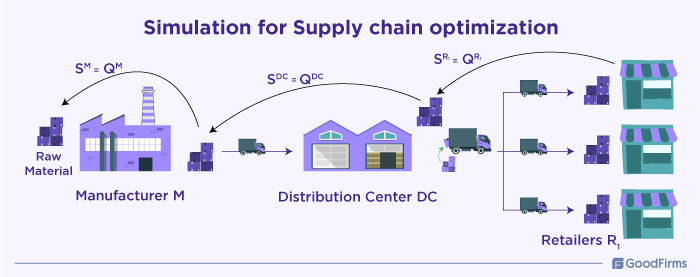
Simulation software is widely used in the supply chain, which is a crucial department of any product-based business. From inventory management to demand forecasting, simulation software can offer relevant information to management. Below mentioned are some benefits of simulation software in the supply chain.
- Optimization-based scenario planning to optimize key metrics such as cost, risk, inventory, etc.,
- Determine how different element interacts with each other
- Gain critical insights into supply chain behavior
- Ability to observe the performance of the supply chain
Simulation software can offer numerous optimization techniques to improve the structure, integrity, and operations of the supply chain for eliminating any disruptions and shortage issues. Additionally, simulation software can greatly reduce operational costs, manage supply chain challenges and improve customer service.
Manufacturing
Simulation in manufacturing is very common nowadays for analyzing and obtaining vital information. Whether it is determining production output or identifying risky situations, simulation software can help every manufacturing facility. Simulation software can demonstrate various aspects of manufacturing processes virtually to get the desired insights for production planning, optimization, and scheduling.
These aspects include evaluating the capital investment in infrastructure, predicting the performance of existing or new systems, and comparing alternate options for any design problem. These tools can also be used to measure the manufacturing parameters like production output, time consumption in various processes, deliveries made, in-process or buildup inventory, etc., in a virtual environment. This can bring major transformation to the US manufacturing sector that can add upto $460 billion to the GDP along with 1.5 million jobs.

Source: Mckinsey
Transportation
From risk management and human resources to scheduling and maintenance, the transportation industry involves many complexities. Such complexities can be prevented or reduced using simulation software. Simulation software allows transportation businesses to optimize resource consumption while also improving organizational productivity. For example, GM Holden Australia, a subsidiary of General Motors, saw a 5% increase in the throughput without increasing the costs after using simulation software. Simulation software assists the transportation industry in the following ways:
- Safety simulations for identifying accidental prone points in the design
- Simulating different environments and conditions to train drivers
- Optimizing fleet management
- Operational transportation and fleet control based on real-time data monitoring
- Determining the performance and risks of new integrations and functionalities
Warehouse Operations
The need for modern warehouses is rapidly growing owing to the increase in costs, customer demand, etc. Whether it is warehouse layout and operation or forecasting and adapting to operational needs, simulation software can efficiently resolve such challenges. Simulation software can help optimize and determine the following aspects of warehouse operations as follows:
- Quantity and type of transportation and material handling equipment
- Staff level and floor space requirements and layout
- Warehouse operational expenses
- Loading and unloading gate requirements
- Operational timetables and freight traffic flows
- Performance metrics such as execution time, resource utilization rates, inventory levels, etc.
It is a low-cost and low-risk technique for designing, planning, and optimizing warehouse operations. For example, DHL increased its resource utilization rates by almost 10% and delivered an overall completion time saving of 8.2% using simulation in their warehouses.
Rail Logistics
In March 2023, the total US weekly rail traffic was 458,629 carloads and intermodal units. Due to such huge traffic, rail logistics are experiencing a range of issues associated with rail infrastructure optimization, maximizing rail utilization, increasing capacities, etc. Such issues can be eliminated using simulation software which is also helpful in rail yard design, route optimization, fleet management, resource planning, etc. Some benefits of simulation software in rail logistics include the following:
- Testing policies and reducing congestion for increasing station throughput
- Railyard design, with visual models to aid analysis
- Fleet optimization for locomotive and rail car management
- Maintenance scheduling for spare parts, workers, and depot allocation
Simulation software can simulate and capture almost all interactions between the elements for offering better rail logistics services.
Mining
From a nice-to-have tool to a must-have technology, simulation is doing wonders for the mining industry. For example, using simulation software, Stillwater, a South Africa-based mining company, reduced their backfill time to 20 minutes from 2-3 hours. Simulation software not only optimizes mining operations but also helps in developing enhanced risk mitigation strategies. Some of the popular applications of simulation software in mining are as follows:
- Conducting a risk analysis to evaluate risk causation factors in pit operations
- Recreating and testing different scenarios within an interactive 3D simulation model
- Acquiring real-time insight into mining operations to improve safety and mining operations
- Evaluating the real-time effects of new innovative solutions to mining operations
- Scheduling visibility for mining operations to optimize throughput
- Analyzing equipment utilization rates, routing, and scheduling within mining operations.
Simulation software is very useful for mining firms in assessing various mining processes such as haulage, storage, stockpiles, waste created during transportation of materials, surface material handling, etc.
Oil & Gas

Source: Statista
The global oil demand could exceed 106.5 million barrels per day by 2030. Gas demand could also go high, due to which the Oil and Gas industry can experience various challenges associated with efficiency and productivity. Due to this, this industry is also deploying simulation software into its operations. In this industry, simulation software uses industry-validated simulation accuracy and time-saving workflows to increase the safety, profits, and throughput of the entire site. Following are the ways in which a simulation software can help Oil and Gas industry:
- Operations planning, maintenance scheduling, routing, and positioning
- Storage management with variable conditions and demands
- Field production optimization, minimizing disruptions, and maximizing returns
- Pipeline network design to deliver capital savings, boost revenue and deliver exceptional ROI
- Oil transfer process analysis and design for ports, rail, and road
- Refinery system process analysis and testing
Whether it is drilling or distribution, simulation software can deliver detailed insights to the Oil and Gas businesses for more effective innovations and developments.
Ports & Terminals
When it comes to reducing costs and increasing productivity at Ports and Terminals, simulation tools are the perfect choice for firms. For example, Terminal San Giorgio Ports of Italy increased its overall terminal throughput by 20% using simulation software coupled with artificial intelligence. These tools allow ports and terminals to acquire deep and critical insights for developing plans in a risk-free environment. In addition, the simulation tools are also used for risk mitigation, internal logistics analysis, decision support, and disruption response to prevent losses.
Through simulation software, firms can ensure optimal resource management for yard access planning, berthing, maintenance, and logistics. Moreover, ports and terminals also use the simulation for container yard planning to determine stack heights, reduce rehandling, and enhance the container throughput.
Road Traffic
In the US only, traffic fatalities reached a 16-year high in 2021, with over 42,915 deaths. Coupling with the growing population, road infrastructure planning is becoming a crucial challenge for firms and municipalities. In addition, the need to avoid congestion and meet the budget and city environment requirements is forcing institutions to opt for simulation software. Road network change in the real world can lead to huge economic consequences, due to which finding optimal solutions through simulation is crucial.

Simulation tools can help traffic planning by simulating the changes, reductions, and additions in the road network. This software can also be used for sequencing and traffic light timing for efficient system-wide optimization. Traffic impact assessment can also be carried out through simulation for integrating public buildings and objects into road networks.
Passenger Terminals
In the US only, the total air passenger traffic increased by 104% in 2022 as compared to 2021. Such a huge number shows that passenger handling is one of the major concerns of passenger terminals. However, this issue was prevented using simulation software which offers realistic and scalable models to firms for airport terminals and other passenger handling facilities. These tools allow proper planning, designing, and optimizing infrastructure and operational processes for better passenger handling.
Simulation in passenger terminals can help the authorities to determine facility requirements, validate new layouts, and optimize the existing terminal facilities. In addition, the authorities can also conduct cost-effective analysis to plan the terminal infrastructure, determine bottlenecks, and identify cost-efficient and effective operational concepts.
Healthcare

Source: Insiderintelligence
By 2025, the number of remote patient monitoring users can cross 70.6 million, due to which the healthcare industry is subjected to intense constraints and scrutiny on various levels. Due to this, simulation in healthcare is very fruitful for the patients and healthcare professionals in ensuring proper care and treatment. For example, Nebraska Medical Center used simulation software to remove their workflow bottlenecks while reducing the traveling time for patients and doctors. Simulation software in healthcare can be used for the following:
- Developing hospital designs, asset placement, and process flows
- Determining the resource utilization rates
- Planning healthcare policies, distribution, and allocation of resources
- Simulating any epidemic to evaluate relevant strategies
- Planning pharmaceutical production and supply chain
Apart from these, simulation software also helps in providing training to medical practitioners, mimicking real-life medical cases virtually, demonstrating new medical procedures for complicated health emergencies, etc.
Business Processes
Simulation software in business processes is used to determine the value of improvements to businesses. In addition, businesses can also understand the weaknesses and strengths of their processes for focusing on essential areas. Simulation software is mostly used to design or improve business processes after analyzing their efficiency and effectiveness virtually. Through this, businesses can avoid disruptions in daily business operations and facilitate continuous improvements and decision-making. Simulation is a good way for bringing agility and flexibility to an organization.
Asset Management
The US asset management market is anticipated to reach $4.3 billion by 2030 at a CAGR of 11.5%. Owing to this, simulation is rapidly gaining traction in the asset management field so that businesses can make informed decisions. Asset managers can use simulation software for better asset allocation, risk management, and investment strategies. In addition, simulation software allows asset managers to create virtual models of their portfolios, test various hypothetical scenarios, and analyze the potential outcomes of different investment strategies in a more sophisticated manner.
Marketing

Source: Statista
Digital marketing spending is estimated to cross $835.82 billion by 2026. This shows the emphasis businesses are putting in marketing campaigns. Simulation software is a good choice for developing effective marketing campaigns. Marketing managers can try and test their marketing campaigns virtually in a simulated environment to analyze their effectiveness. In addition, simulation software allows marketing managers to analyze and forecast consumer behavior, brand loyalty, competition, market behavior, etc. Marketing managers can generate required market insights through simulation, which can be used to develop the right marketing strategies.
Defense
Defense is a crucial industry that regularly deals with numerous tough and dangerous situations. This industry is also deploying simulation software for various purposes, such as simulating military operations and evacuations, testing strategies and tactics, and training soldiers. For example, the European Commission used simulation to plan evacuation in cases of a bomb explosion, melee weapon attack, and drone attack in metro stations.
Simulation software can create a realistic training environment for soldiers to practice and hone their skills. They can also plan and execute their military operations virtually to determine the effectiveness of their decisions and strategies. Moreover, defense personnel can also test new weapon systems through simulation software for accuracy, reliability, and effectiveness. Overall, simulation software can greatly reduce the risks to the lives of soldiers and civilians.
Call Center
51% of call centers are focused on proactive customer service. For this proactive customer service, many of these businesses are using simulation software to analyze and improve the calling processes. From call volume forecasting to quality control, simulation software is a valuable tool for call centers for improving efficiency and reducing costs. The simulation software can forecast the call volume based on seasonal patterns and historical data so that call center managers can make proper decisions for resource allocation and staffing levels.
In addition, call center agents can also benefit from these tools in terms of practicing their communication skills, handling difficult situations, and improving their overall performance in a virtual but realistic environment. Simulation software can also enhance the customer experience by understanding and improving the call wait times, call handling times, and agent performance.
Pros of Using Simulation Software

There are numerous benefits of using simulation software in business systems and processes. These benefits include bottleneck identification and removal, predicting possible outcomes, increasing output while cutting costs, managing business risk, and many more. Some major benefits of using simulation software are as follows:
Operations Analysis and Efficiency Evaluation
A simulation software is capable of mimicking the entire operational process for enhanced analysis. Through this, businesses can identify inefficiencies and flaws in the system. If the simulation results are not in accordance with the anticipated results, then they can rerun the entire simulation with different variables. Around 83% of businesses are focused on developing growth-based business strategies. Such strategies can be developed using simulation in which the efficiency of different processes under different scenarios can be evaluated for determining the best strategies.
Bottleneck Identification and Removal
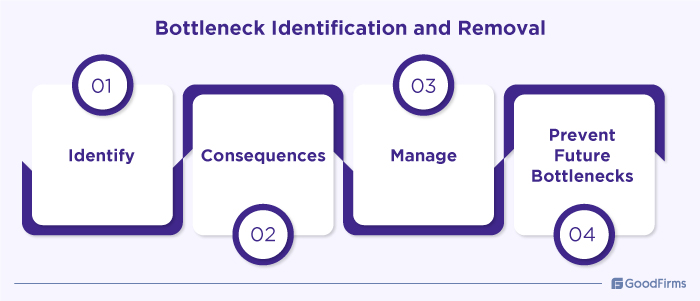
A bottleneck can significantly impact the business output when ignored. Through simulation software, businesses can simulate the systems to track the flow of people, data, and materials. Through this, potential points or bottlenecks are identified and variables are again changed to manage and eliminate them in simulation.
Business Process Optimization and Improvement
Simulation software comes with the capability of accurately modeling different systems and processes. Due to this, they can give relevant information on the processes through which businesses can determine the inefficiencies and redundancies in the system. Through this, they can prevent business interruptions which is a major challenge for businesses. In addition, simulation software can also identify potential problems which can be eliminated before arising. With accurate data, businesses can resolve these identified inefficiencies and redundancies to optimize and improve the processes. New processes can also be created after simulating the concept with proper considerations.
Increasing Output While Cutting Costs
After the pandemic, several companies are focused on cost-cutting. So, the only way to reduce costs and increase output is to invest in simulation software. Through simulation software, businesses can iterate and test their designs quickly. Due to this, businesses can design better products in one go, which hugely contributes to reduced costs. In addition, simulation software allows businesses to create accurate simulations of the production process for the identification of weak areas. Through this information, appropriate changes can be made to the production process for reducing costs and increasing output.
Predicting Possible Outcomes
Around 19% of businesses fail within a few years of launching their business due to having a flawed business model. Simulation software can prevent such issues as it helps business owners in simulating various conditions and models for business sustainability. This is useful in generating more accurate forecasts of the potential outcomes. Using specific data and variables, businesses can explore different what-if scenarios through which they can predict the possible outcomes of each considered scenario. This allows them to make better decisions for improving business processes and their performance.
Managing Business Risk
A simulation software is a powerful tool for business risk identification and mitigation. By simulating real-world situations, businesses can test different scenarios for determining risks and weak areas. This helps in evaluating the potential impact of different risks on business functions and processes. Then, based on these results, strategies are developed to properly eliminate the identified risks and improve the weak areas.
Enhanced Collaboration and Teamwork
Businesses also use the simulation for improving teamwork and collaboration among employees. Through simulation tools, employees can test and work on their collaboration skills and weak areas under different simulated situations. Through this, the employees can know and understand each other better. This increases their confidence which allows them to perform better as a team worker.
Robotic Process Automation
The global robotic process automation market was valued at $2.3 billion in 2022 and is anticipated to grow at a CAGR of 39.9% in the upcoming years. This shows that it is rapidly becoming common in manufacturing and other industries for automating repetitive tasks. Simulation software in RPA is used to simulate the behavior of automated robots in a controlled environment to determine their effectiveness and efficiency in manufacturing and other processes. The simulation also enables businesses to determine the potential issues or bottlenecks in the processes so that robots can be calibrated again for optimum results.
Process Mining
Simulation software also helps businesses in discovering, improving, and validating workflows. Process miners can simulate real-world processes to obtain important information regarding the processes. Through this, they can understand the performance of existing processes to determine any flaws or other areas of improvement. This benefits the process miners in making data-driven decisions to ensure efficient process mining and optimization.
Digital Twins
This is another capability of simulation software that can be used to create digital twins of any physical system and business processes. Whether it is automotive and transportation or healthcare and education, businesses of all sectors are using digital twins to test and simulate the behavior of different complex systems. Digital twins help business organizations in reducing the chances of errors and optimize the performance and safety of existing systems.

Digital Transformation
Businesses spending on digital transformation could grow upto $3.4 trillion by 2026. Simulation software is one such solution that can support the rapid digital transformation of businesses. Whether a business needs to improve its product design and model or improve process efficiency, simulation software can do it all. In addition, simulation software also helps businesses in reducing costs and eliminate risks so that continuous improvements can be made to the system and processes as per the business needs. Moreover, simulation tools can also be used to provide training to employees for better business performance.
Capital Investment
Simulation software is a helpful tool for determining the required capital investment in business processes. Using simulation software, businesses can estimate the required capital in resources and equipment so that only required capital is invested instead of wasting it on unnecessary resources and equipment. By using simulation, companies can avoid unwanted capital investments in business operations and functions.
Build Business Cases
Simulation software can also be used to build business cases. Whenever business organizations experience any problem in a proposed system, they can use simulation software to identify potential solutions. The majority of business case problems are associated with costs, feasibility, risks, return on investment, etc., which can be predicted or determined using simulation.
Top 5 Common Challenges of Simulation Software

Simulation software can help replicate real-world behavior virtually but with some challenges. These challenges can arise at any time due to unprecedented situations and differences in variables. Some major challenges of simulation software are discussed below.
Reality Gap
The reality gap refers to the difference between the virtual and the real world. This gap occurs in many software which can negatively impact both businesses and employees. Simulation tools can help predict real-time behavior virtually, but businesses cannot fully rely on these tools. This is because simulation tools work based on the given parameters and situations. Whereas in the real world, these parameters and circumstances can vary, which may cause conflictual situations. However, newer versions of simulation software could resolve this challenge as they are equipped with the latest technologies and multiple functionalities to create simulations that can accurately represent the real world.
Missing capabilities
Not all simulation software comes with all the needed functionalities and capabilities. Such challenges can arise when the software cannot accurately predict certain phenomena or processes. Concerns associated with limited models, incomplete datasets, low computing power, limited customization, user interface, etc., can lead to missing capabilities. Developers need to ensure that the developed simulation software should not have such issues so that businesses can easily use them without any problems.
Security Vulnerabilities
44% of companies agree that cyber threats were the biggest risk to business in 2022. Digital technologies are always prone to security vulnerabilities, and they can be attacked anytime by hackers. There are huge chances that hackers can gain unauthorized access to the simulation software or its data. Due to this, critical data could be lost, leading to serious issues in properly running simulations. To prevent these issues, businesses should heavily focus on the security and safety of simulation software during development or purchasing.
Simulator complexities
In some cases, simulator complexities could also influence the results of the simulation, which can negatively impact businesses. These complexities include a bad user interface, complex systems, and principles, proper coordination between different elements of system architecture, improper data management, etc., that can cause serious problems in simulation. To resolve such problems, businesses need to refine their models, improve software architecture, optimize data management, and provide a good user interface.
Failure to Account for all Variables
A huge number of variables are used by the simulation software to efficiently simulate the real world. Sometimes, the system fails in considering all the variables during simulation, due to which the software may not accurately model the whole scenario. This can cause serious changes in the simulation and its end results which could also influence organizational functions.
In addition, not having proper access to accurate data is another reason behind the failure of accounting for all variables. Machine learning and artificial intelligence can be used in the simulation software to help identify and account for all variables that are often missed by the system in traditional simulation approaches.
What Does the Future Hold for Simulation Software?
The simulation software market is rapidly growing and expected to grow upto $440.5 billion by 2030 with a CAGR of 11.83%. The desire for eco-friendly workplaces, efficient operations, and improved productivity is driving the growth of simulation software at the present time. In addition, the demand is anticipated to grow consistently owing to the growing challenges and business risks.
Various factors, such as rising costs, integrations, data quality, etc., could negatively impact the simulation. These factors should be essentially considered by the businesses as well as developers to ensure that the businesses are using reliable simulation software. This is beneficial in gaining validated and accurate insights for making improved decisions.
Interestingly, digital technologies like artificial intelligence, IoT, machine learning, virtual reality, etc., are rapidly evolving. Due to this, simulation software is also rapidly evolving, and businesses are adapting accordingly to get enhanced benefits. AI and ML are enabling more advanced and realistic simulations with improved accuracy and speed. Additionally, IoT and virtual reality are offering more immersive and interactive simulations for better growth and sustainable business.


